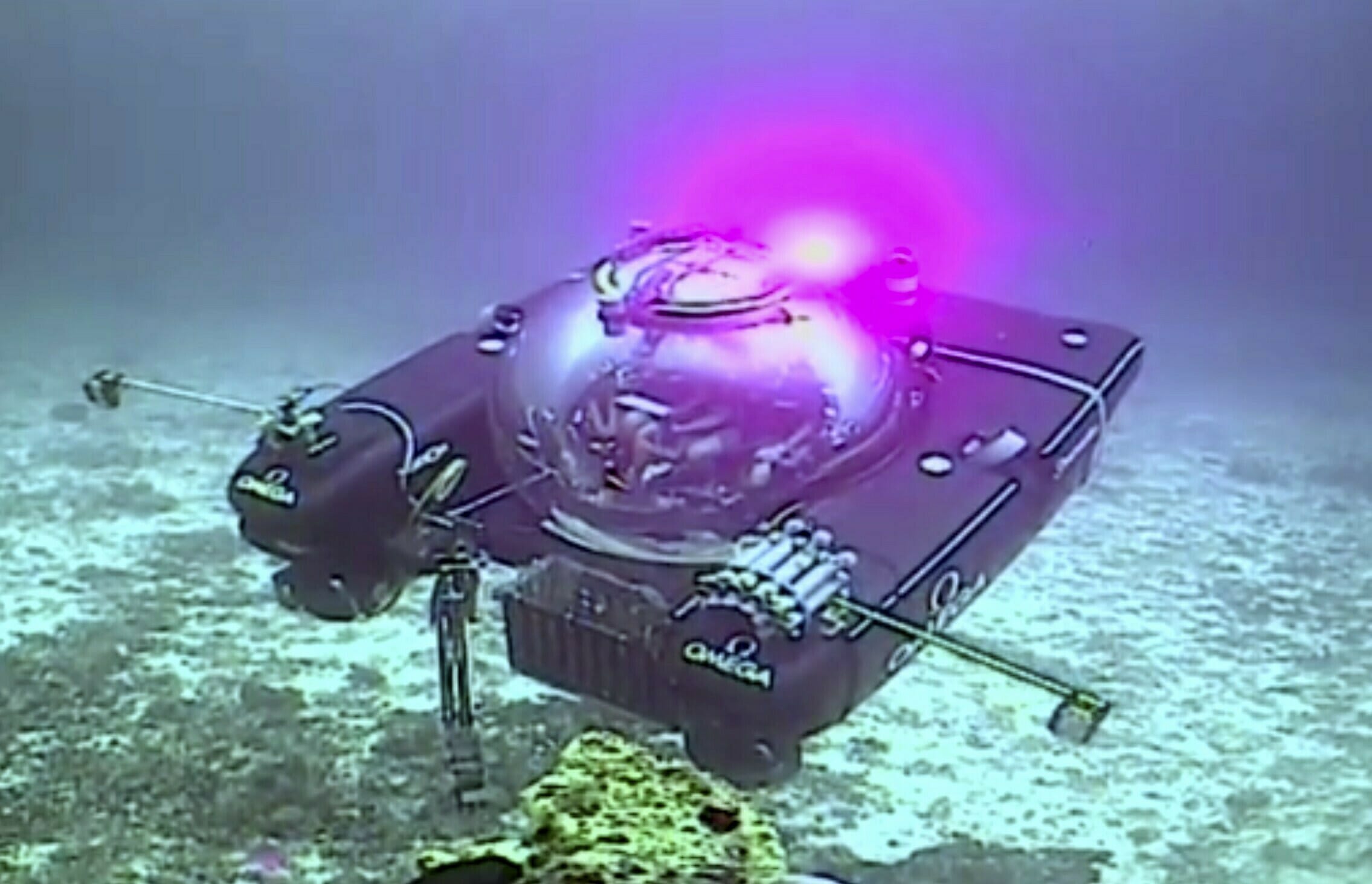
Indian Ocean exploration mission makes historic broadcast
ALPHONSE ISLAND, Seychelles (AP) — A British-led scientific mission to document changes taking place beneath the Indian Ocean has broadcast its first live, television-quality video transmission from a two-person submersible.
Monsoon storms and fierce underwater currents continued to present a challenge at greater depths as scientific work began in earnest on Tuesday off the Seychelles.
The Associated Press has successfully broadcast the first multi-camera live signal in full broadcast quality from manned submersibles using optical video transmission techniques, in which the pictures transmit through the waves using the blue region of the electromagnetic spectrum.
Previous real-time video transmissions from the world’s deep oceans were livestreams sent from remotely operated unmanned subsea vehicles, with the video moving via fixed fiber optic cable.
The first transmission came from 60 meters (200 feet) down. Previous deep-sea livestreams cataloguing the world’s oceans have been via fiber-optic cable. The new broadcast uses cutting-edge wireless technology, sending video optically through the waves.
The Associated Press is the only news agency working with British scientists from the Nekton research team on its deep-sea mission that aims to unlock the secrets of the Indian Ocean, one of the world’s least explored areas.
The multi-national team of scientists is gathering data to help policy-makers frame protection and conservation measures.
Nekton Mission director Oliver Steeds said the experience battling the waves underlines the need to expand scientific knowledge of the waters off the island nation, which the team is there to do.
“The problem is, when it comes to this place, when it came to the currents, the last current data that was gathered before we came here was in 1882,” he said. “It’s part of the challenge. This is exploration.”
The day of celebration was cut short when an accident severed the cable of a key piece of equipment, leaving it on the sea bed off the tiny island of Alphonse.
It wasn’t known what cut the cable of the Remotely Operated Vehicle, or ROV, though it may have been the ship’s propeller. The camera-carrying ROV is a vital image-gathering tool that can go deeper than the submersibles.
It wasn’t clear what impact the accident will have on the team’s work. The two submersibles will mount a retrieval operation on Wednesday.
AP video coverage will include exploring the depths of up to 300 meters off the Seychelles in two-person submarines, the search for submerged mountain ranges and previously undiscovered marine life, a behind-the-scenes look at life on board, interviews with researchers and aerial footage of the mission. The seven-week expedition is expected to run until April 19.
___
Follow David Keyton on Twitter at https://twitter.com/DavidKeyton
The Western Journal has not reviewed this Associated Press story prior to publication. Therefore, it may contain editorial bias or may in some other way not meet our normal editorial standards. It is provided to our readers as a service from The Western Journal.
Truth and Accuracy
We are committed to truth and accuracy in all of our journalism. Read our editorial standards.
Advertise with The Western Journal and reach millions of highly engaged readers, while supporting our work. Advertise Today.












